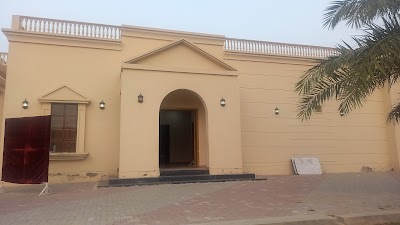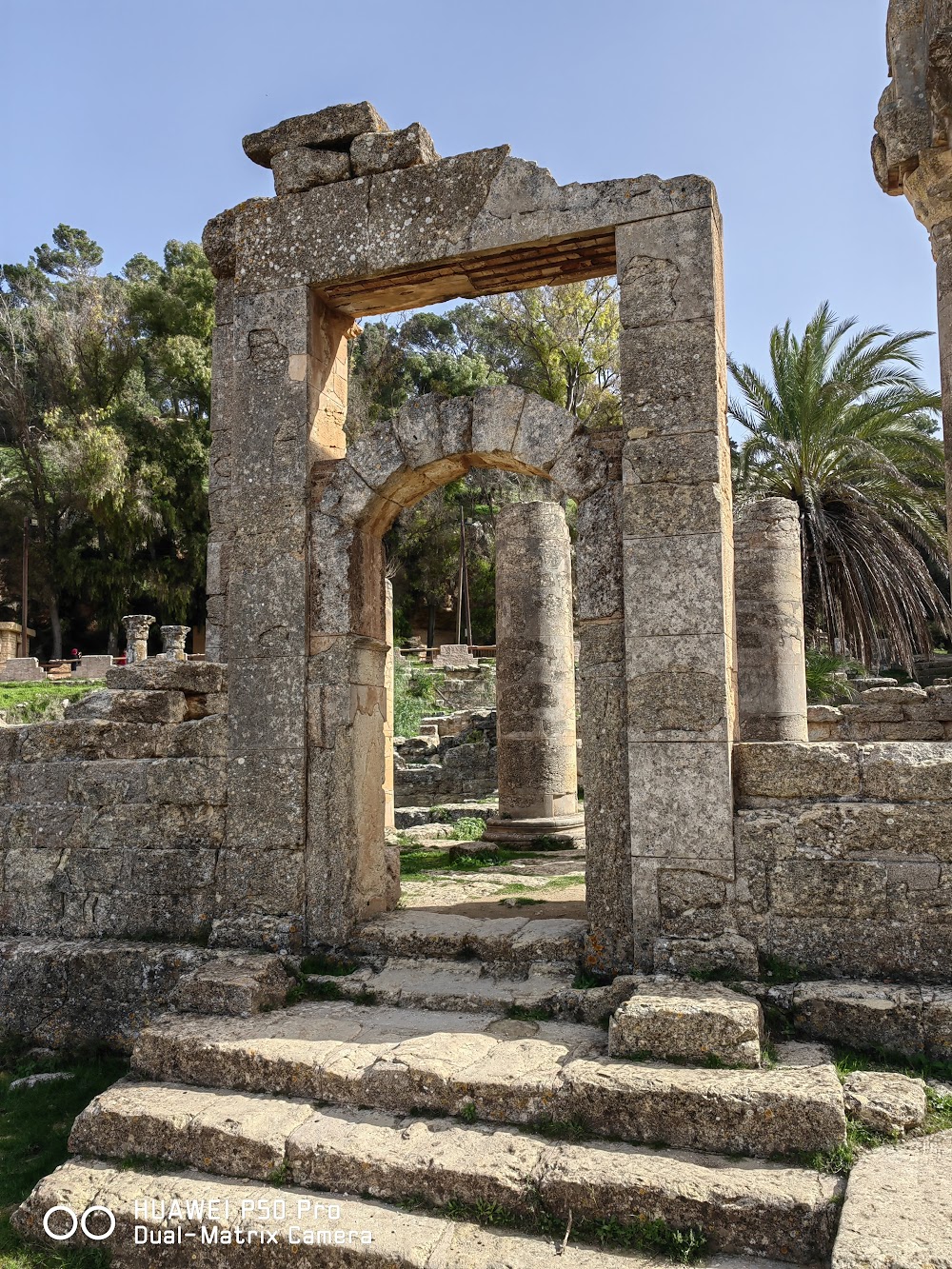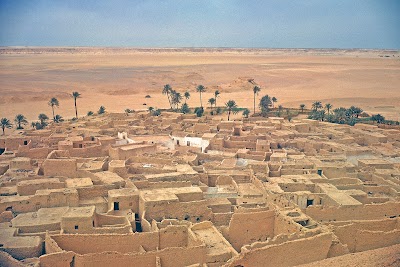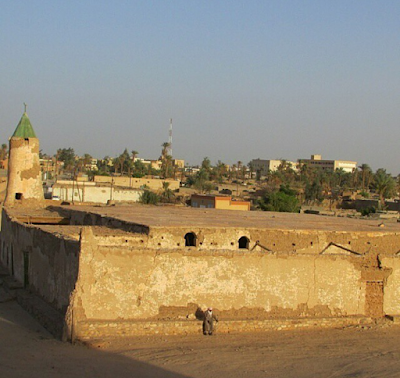Qasr Al-Hamra (قصر الحمراء)
Related Places
Overview
Qasr Al-Hamra, located in the Al Wahat District of Libya, is a captivating destination steeped in history and cultural significance. Nestled within the vast desert landscape, this remarkable site, known as the "Red Castle," offers an enchanting glimpse into Libya's rich heritage. As a monument of historical importance, Qasr Al-Hamra stands out not only for its architectural beauty but also for its storied past.
A Historical Relic
Qasr Al-Hamra is a relic from an era when the region thrived as a center of trade and culture during the ancient Berber civilization. Constructed in the traditional architectural style of the time, the castle's distinctive reddish hue contributes to its name. Built primarily from locally sourced materials, including red mud bricks and stone, the structure showcases both aesthetic appeal and durability, allowing it to withstand the harsh desert climate for centuries.
A Hub of Commerce and Governance
The significance of Qasr Al-Hamra extends well beyond its architectural allure; it was once a vital hub for commerce and governance. Serving as a fortified center, the castle allowed leaders to manage local affairs, oversee trade routes, and provide protection against invading forces. Its strategic placement in the Al Wahat District highlights its importance in ancient times, controlling a key passage frequented by traders and travelers alike.
Exploring the Castle
Visitors to Qasr Al-Hamra can step back in time and imagine the bustling activity that once filled its grounds. The intricate network of rooms and hallways within the castle reflects a blend of functional design and artistic flair. Wander through the inner courtyards, admire the ornate decorations, and ponder the remnants of ancient life embedded in the walls. The thick fortifications, though weathered, still tell tales of historical skirmishes and the resilience of past inhabitants defending their way of life.
Resilience Through Time
An intriguing aspect of Qasr Al-Hamra is its remarkable preservation despite the passage of time and the various conflicts that have affected the region. This resilience provides a tangible link to the past, making it a valuable site for historians and archaeologists eager to uncover more about Libya's ancient civilizations. The castle also offers insights into traditional building techniques and sustainable architecture that were expertly tailored to the demanding desert environment.
An Immersive Cultural Experience
For foreign tourists, a visit to Qasr Al-Hamra is not just an educational journey but also an immersive cultural experience. The surrounding landscapes offer breathtaking vistas of the Libyan desert, characterized by serene beauty and the occasional verdant oasis. This stunning backdrop enhances the exploration of the castle, where local guides bring the history of the site to life with their engaging stories and knowledge.
Engaging with Local Culture
Travelers can also appreciate the vibrant local culture in the Al Wahat District, reflected in artisan crafts and traditional Libyan cuisine available in nearby markets. Interacting with the local community provides a deeper understanding of contemporary Libyan life and its ongoing connection to ancient traditions. Visitors can indulge in regional specialties such as couscous, tajine, and various dates, each dish offering a taste of the area's culinary heritage.
A Lasting Legacy
In conclusion, Qasr Al-Hamra is more than just a historical monument; it symbolizes the enduring legacy of ancient civilizations and their intricate connections to present-day Libyan culture. Whether you are a history enthusiast, an architecture aficionado, or simply a traveler seeking to explore the lesser-known treasures of the world, Qasr Al-Hamra in the Al Wahat District promises a rewarding and enriching experience. It stands as a beacon of the past, inviting visitors from all corners of the globe to uncover its secrets and marvel at its timeless beauty. A visit to Qasr Al-Hamra is sure to leave you with lasting memories and a deeper appreciation for the rich tapestry of human history.






